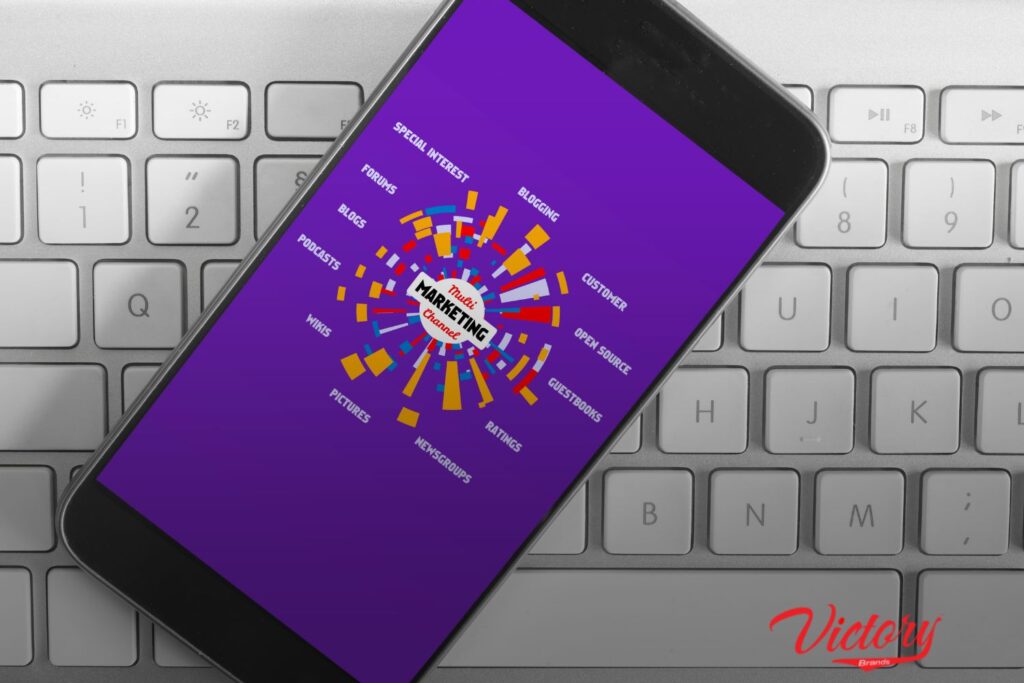The Power of User-Generated Content (UGC) in Boosting E-commerce Sales

The Power of User-Generated Content (UGC) in Boosting E-commerce Sales

In today’s digital world, businesses are always looking for ways to stand out in an increasingly competitive market. One of the most effective methods for doing so is through user-generated content (UGC). UGC refers to content created by customers or users of a product or service, such as reviews, photos, social media posts, and videos. This content, shared voluntarily by consumers, has become a goldmine for e-commerce businesses looking to boost their sales and build trust with potential customers.
In this blog post, we’ll explore the significance of UGC, its role in improving trust, engagement, and conversions, and how it can be leveraged effectively to enhance e-commerce sales.
What is User-Generated Content (UGC)?
User-generated content refers to any form of content—images, videos, text, reviews—created by people rather than brands. UGC is typically shared on social media or other digital platforms and showcases genuine experiences of real users with a product or service.
For e-commerce businesses, this content is invaluable, as it functions as both social proof and a more trusted marketing tool than traditional advertising.
Types of UGC
- Customer Reviews: Written opinions or ratings of a product by customers, often found on product pages.
- Social Media Posts: Photos, videos, or stories posted by users that feature a product.
- Unboxing Videos and Hauls: Videos where influencers or customers showcase products they have purchased.
- Testimonials: Customer statements regarding their experiences with a product or service.
Why UGC is Crucial for E-commerce Success
1. Builds Trust and Authenticity
One of the key reasons UGC is so powerful is that it builds trust. Today’s consumers are skeptical of overly polished brand messaging and prefer recommendations from real users. According to a Nielsen study, 92% of consumers trust recommendations from other people more than brand messaging. When potential customers see real people using a product and sharing their positive experiences, it boosts credibility and authenticity.
2. Drives Higher Engagement
User-generated content (UGC) cultivates community and enhances engagement with a brand. Consumers who create and share UGC often feel more connected to the brand, which strengthens customer loyalty. Additionally, when businesses share UGC on their social media platforms, it encourages more interaction and engagement, such as likes, comments, and shares, which ultimately expands the brand’s reach. UGC posts on social media can receive up to 4x higher click-through rates compared to traditional ads.
3. Boosts Conversion Rates
UGC directly impacts purchasing decisions. Consumers are more likely to buy a product when they see it endorsed by someone like them. Data shows that websites with user-generated content see up to a 29% increase in conversions. Customer reviews, for instance, can provide insights into product quality and usability that standard product descriptions might miss, giving shoppers more confidence in their purchases.
4. Improves SEO Performance
User-generated content can also improve your website’s SEO. When customers write reviews or share posts about your products, they often include relevant keywords that can help your content rank higher in search engine results. Furthermore, UGC adds fresh, unique content to your site, which search engines favor.
How to Encourage and Use UGC in Your E-commerce Strategy
1. Create a Branded Hashtag Campaign
One of the easiest ways to encourage user-generated content is by creating a branded hashtag. This allows your customers to share their experiences with your products in a way that is easily discoverable. Encourage your customers to use this hashtag by featuring their posts on your website or social media platforms.
2. Leverage Customer Reviews
Customer reviews are one of the most powerful forms of UGC for e-commerce sites. Ensure that your product pages have a review section and encourage satisfied customers to leave their feedback. You can also offer incentives, such as discounts or loyalty points, to motivate them to write reviews.
3. Run UGC Contests
Contests are a great way to generate buzz and encourage your customers to create and share content. Offer prizes for the best user-generated content, such as a gift card or a free product. This not only incentivizes users to participate but also creates a fun and interactive way to promote your products.
4. Feature UGC on Product Pages
Displaying user-generated content, such as customer photos and reviews, directly on your product pages can help build trust with potential buyers. You can create galleries of user photos or highlight top reviews that showcase your products in real-life settings.
5. Collaborate with Influencers
Collaborating with influencers is another way to boost UGC. Influencers typically possess substantial, engaged followings that value their recommendations. Partner with influencers who align with your brand values to create authentic content that resonates with their followers. Influencer-generated content can catalyze regular customers to share their own experiences with your products.
Case Studies: Brands Leveraging UGC for Growth
Glossier
Glossier, a beauty brand, has centered its entire marketing strategy on user-generated content. The brand frequently reposts customer content on its social media accounts, showcasing real customers using its products. This strategy has not only helped Glossier build a loyal customer base but has also driven significant sales growth.
Coca-Cola’s “Share a Coke” Campaign
One of the most successful UGC campaigns was Coca-Cola’s “Share a Coke” campaign, where they printed popular names on bottles and encouraged customers to share photos with their personalized Coke bottles. The campaign generated massive engagement across social media platforms and significantly boosted sales.
GoPro
GoPro actively encourages its users to share videos of their adventures using GoPro cameras. These videos serve as real-life testimonials of the product’s durability and quality, creating an endless stream of authentic UGC that continually promotes the brand.
Overcoming the Challenges of User-Generated Content (UGC)
While UGC can be incredibly beneficial, it also comes with its challenges. For instance, not all user-generated content will align with your brand’s messaging, and moderating content can be time-consuming. To overcome these challenges:
- Set clear guidelines: Provide customers with instructions on the type of content you are looking for to maintain brand consistency.
- Use UGC tools: Many tools are available that can help you collect, manage, and display UGC efficiently. Tools like Yotpo, Bazaarvoice, and TINT allow you to integrate customer reviews, photos, and social posts seamlessly into your site.

Conclusion
Incorporating user-generated content into your e-commerce strategy can significantly enhance customer trust, engagement, and conversion rates. By encouraging and leveraging UGC, you not only create a community around your brand but also tap into authentic marketing that resonates with consumers in a way traditional advertising cannot.
For e-commerce businesses looking to build credibility and boost sales, user-generated content is a powerful tool that should not be overlooked. Start implementing UGC strategies today, and watch your brand’s influence grow.
Frequently Asked Questions
UGC, or user-generated content, is any content—such as reviews, photos, or videos—created by customers rather than the brand. In e-commerce, UGC helps build trust and authenticity around a product or service.
UGC increases sales by providing social proof, building trust, and enhancing customer engagement. Consumers are more likely to purchase products endorsed by other users.
Examples include customer reviews, social media posts, photos of products shared by users, and unboxing videos.
You can encourage UGC by running contests, creating branded hashtags, offering incentives for reviews, and collaborating with influencers.
Yes, UGC is beneficial for SEO as it provides fresh, relevant content that can improve your search engine rankings.
Share:
Categories
- Brand Strategy
- Business Growth
- Business Strategy
- Content Marketing
- Custom Software Development
- Customer Relationship Management
- Digital Advertising
- Digital Marketing for Startups
- Digital Marketing Strategy
- E-Commerce
- Email Marketing
- Future Marketing
- Influencer Marketing
- Lead Generation
- Mobile Optimization
- Pay Per Click (PPC)
- SEO
- Social Media Marketing
- Social Media Marketing
- Social Media Trends
- Software Development
- Startup Strategies
- Technology
- User Experience (UX)
- Venture Development
- Video Marketing
- Web Design
- Website Design
- Website Optimization
Latest Post
- SEO Best Practices for Modern Website DesignIn the competitive digital landscape, a well-designed website is not just about…
- Why Storytelling is Crucial for Effective Brand StrategyIn a world inundated with advertisements and messages, cutting through the noise…
- How to Conduct a Competitive Analysis for Brand Strategy SuccessIn today’s crowded marketplace, distinguishing your brand is essential for success. One…
Other Blogs




